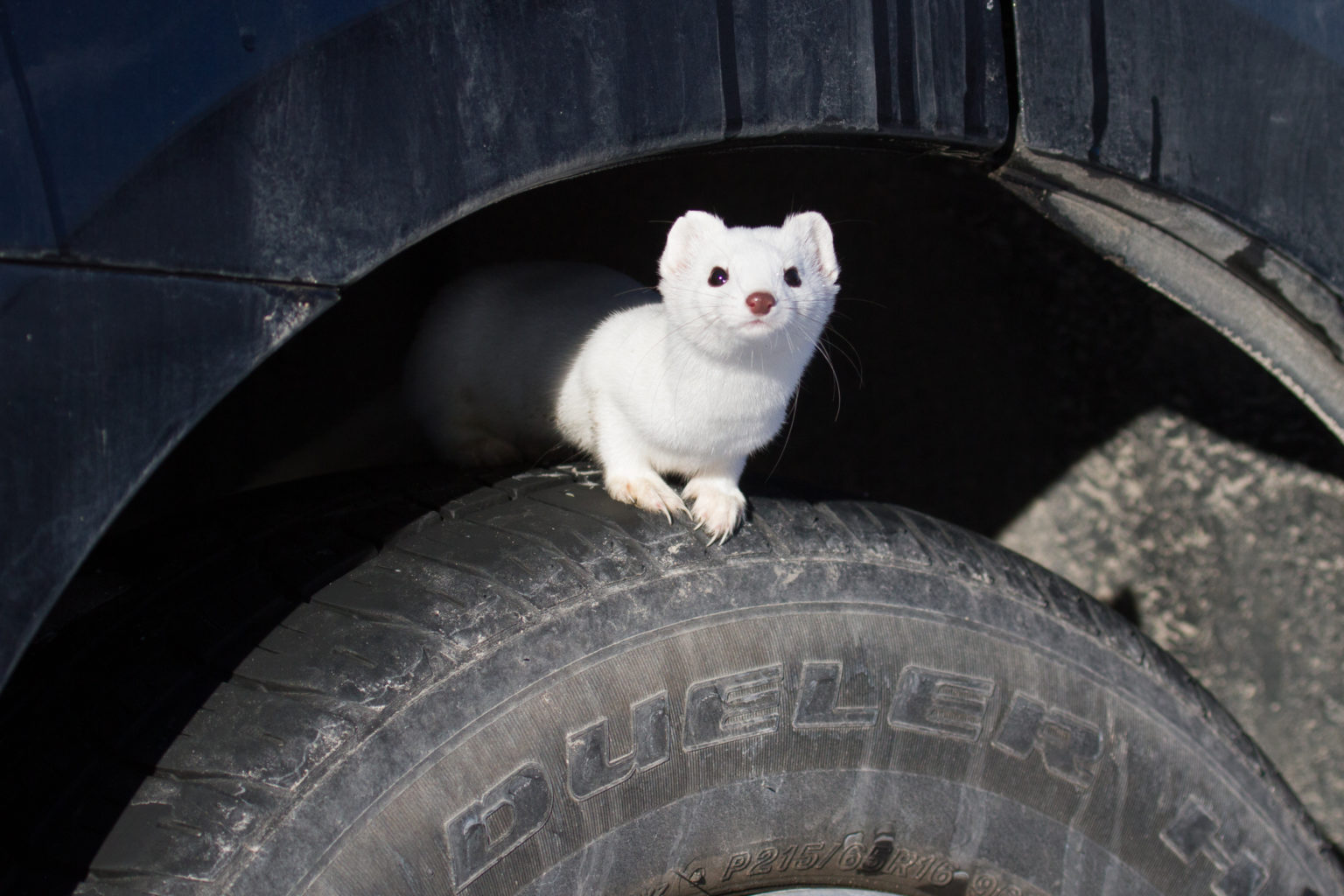The Nature Of Wild Houseguests

The Nature Of Wild Houseguests
By Sean Beckett, NBNC Program Director
(This is an expanded version of the article published in NBNC’s semiannual “Field Marks” newsletter.)
As sure a sign of spring as blooming trilliums are phone calls to NBNC by those wondering what to do about the wildlife wandering around outside –and sometimes inside– their homes. In the spirit of the season, here are some tips for at-home wildlife encounters this season.
Mouse in the House: Mice are attracted to the sugars and oils not just in food crumbs, but also in your electrical wiring. And there is certainly a mouse nest made of wall insulation somewhere in your home, even if you haven’t found it yet. In your efforts to evict them, use mouse traps if you must, but never use rodenticide. Rodents die slowly and gruesomely by these chemicals, and pass that fate onto the foxes and owls that consume them. Instead, use steel wool to plug all the holes around the exterior. Better yet, enlist the help of a weasel…
Weasels in the Kitchen: Also known as ermines in their winter white pelage, weasels make better mousers than housecats. Uninterested in your insulation or bread crumbs, indoor weasels are in search of mice and voles. Leave them alone and you may discover that your mouse problems disappear. Once they do, the weasel will move out and hunt elsewhere. If your weasel has worn out its welcome, disengage any mouse traps to avoid injuring it, then catch it with an indoor live trap baited with fresh meat.
Chicks on the Porch: Despite common lore, mother birds will not abandon their chicks when touched by human hands. If you find a nestling, look for the nest. If you can reach it, put it right back in (wash your hands before and after). If the chick falls out again, or if you can’t find or reach the nest, place it in a comfortable shoebox off the ground or as close to the nest as you can safely manage. The parents will hear and recognize their chick, and will often resume care. But life in the nest is not always rosy: older chicks often cast their smaller siblings from the nest, so remember that your best intentions may not be what Mother Nature had in mind.
Turtles in the Driveway: Folks often arrive at NBNC gingerly carrying closed cardboard boxes, asking, “What do I do with this?” Without even seeing what’s in the box, the answer is usually, “put it back where you found it.” In the spring, this is often a turtle that was digging holes in the gravel driveway, or a salamander resting in a puddle en-route to a nearby wetland. We are lucky to live in a landscape woven with wildlands, and that means our homes are home to many other creatures too. Give wildlife the right of way, and unless an animal is clearly imperiled, there’s no need to intervene.
The “Mangy” Fox in the Yard: Don’t worry if you see a fox or coyote during daylight hours. This in itself is no cause for alarm. Even nocturnal animals may be active in the daytime, especially in lean winter months, or when trying to feed young in the spring. Help that fox out by letting it be. If the animal appears sick in some way, that may be a different story. Mange is a skin disease caused by parasitic mites introduced to wild canines long ago by European settlers. Severe itching causes the animal to scratch away its fur. Though the sorry-looking animals can often recover from mange, they may be starving from restlessness or frostbitten from exposure, sometimes provoking more desperate behaviors in pursuit of food. Give these animals space, but they aren’t necessarily a danger.
Mange is different from rabies, the viral disease of the central nervous system transmitted by saliva which presents as erratic, staggering, disoriented, or aggressive behavior sometimes paired with drooling. If you think you’ve spotted a rabid animal, contact Vermont’s rabid animal hotline at 1-800-472-2437.
Bats in the Attic: Since we’re talking about rabies, let’s talk about bats. Less than 0.5% of bats have rabies, and healthy bats are just as excited as rabid bats about the hole in your attic vent. Many mammal species can contract rabies, but bats have become so maligned because we’re more likely to encounter a rabid, attic-dwelling bat in our home than a rabid, forest-dwelling fox. The number of human deaths from rabid bats annually in the United States is between 0 and 4, and most deaths could have been prevented by not picking up the bat. Never touch a bat or any wild animal without training (unless you’re putting that baby bird back in the nest).
Bears at the Birdfeeder: Unless you want bears on your porch, take down your feeders once the snow melts. This advice isn’t to protect the feeders, it’s to protect the bears. “A fed bear is a dead bear” because a food-habituated bear must be euthanized for the safety of people and property. Even if you have no bears in your area, feeders are bad news for raccoons, opossums, and other mammals too. Feeders are for the birds: when mammals congregate at our feeders, we risk habituation and spreading disease.
Birds at the Window: Be mindful of your windows while your feeders are up, because windows and birds are a deadly combination. You can reduce window strikes by placing decals in the windows, adding screens on the outside, or even installing special glass designed for birds’ unique vision. But an underappreciated tip is to keep birds from seeing straight through the house. A bird may fly right into a window because it is aiming for the woods out the opposite side of the room. Closing the shades next to the feeder would obviously help, but you can instead close the shades on windows opposite the room from the feeder.
Note: North Branch Nature Center cannot accept injured animals. If you encounter an injured animal, call the Vermont Institute of Natural Science Injured Bird Hotline at 802.359.5000 x212 or call a licensed wildlife rehabilitator on the Vermont Department of Fish & Wildlife website.

